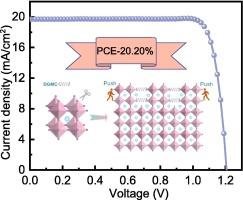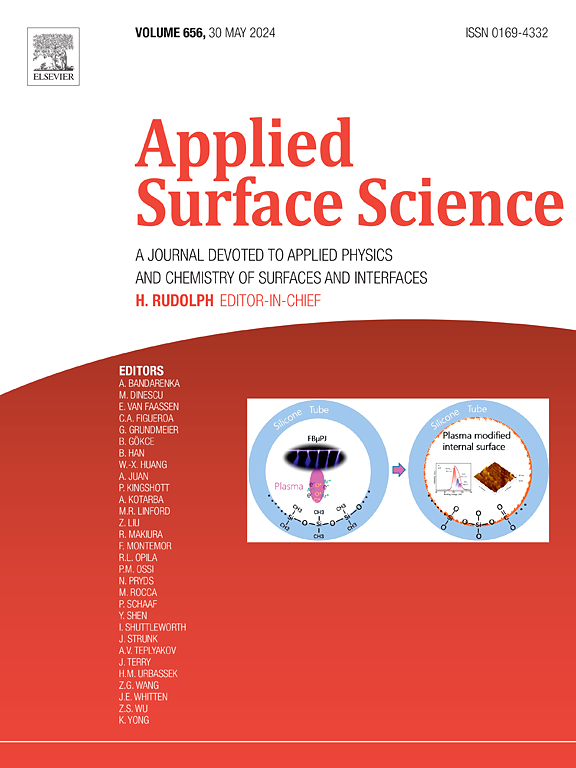Trimming defective perovskite layer surface boosts the efficiency for inorganic solar cells
IF 6.3
2区 材料科学
Q2 CHEMISTRY, PHYSICAL
引用次数: 0
Abstract
Inorganic perovskites have attracted much attention due to their excellent photothermal stability. However, the elevated density of surface defect states limits further improvements of the efficiency. Here, we demonstrate a surface defect trimming (SDT) strategy to enhance device photovoltaic performance. In brief, surface defects are eliminated by the synergistic action of methanol solvent and 1, 3-diaminoguanidine monohydrochloride (DGMC). The amino group of DGMC interacts with Halogen ion via hydrogen bonding and with Pb2+ via Lewis base–acid coordination bonds. also plays the role of in-situ passivation of defects. The surface reconstruction was realized in the process of secondary annealing. The surface defect state density is trimmed and the work function is well matched with the transport layer. Consequently, the inverted device based on SDT strategy achieves 20.20 % power conversion efficiency (PCE) and record 85 % fill factor (FF) in the full ambient air.

求助全文
约1分钟内获得全文
求助全文
来源期刊

Applied Surface Science
工程技术-材料科学:膜
CiteScore
12.50
自引率
7.50%
发文量
3393
审稿时长
67 days
期刊介绍:
Applied Surface Science covers topics contributing to a better understanding of surfaces, interfaces, nanostructures and their applications. The journal is concerned with scientific research on the atomic and molecular level of material properties determined with specific surface analytical techniques and/or computational methods, as well as the processing of such structures.
 求助内容:
求助内容: 应助结果提醒方式:
应助结果提醒方式:


